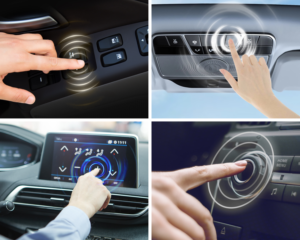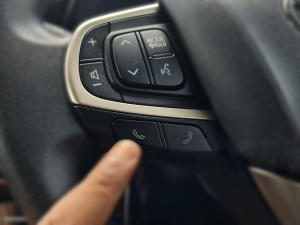In today’s rapidly evolving technological landscape, advancements in haptic feedback technology offer promising avenues for improving sensory perception among vulnerable populations, including those with visual impairments, hearing impairments, and sensory processing disorders. Haptic feedback refers to the use of touch sensations to communicate with users, enhancing their understanding and interaction with digital interfaces and real-world environments. In this blog post, we’ll explore how haptic feedback technology is revolutionizing accessibility and empowering individuals with sensory challenges to navigate the world more confidently.
Empowering the Visually Impaired
For individuals with visual impairments, navigating unfamiliar environments can be daunting. Traditional assistive technologies like canes and guide dogs offer valuable support, but they have limitations. Haptic feedback devices, such as wearable sensors and tactile navigation systems, provide real-time feedback about nearby obstacles and environmental cues through vibrations or pressure sensations. These devices enable users to perceive their surroundings more comprehensively, facilitating independent mobility and enhancing safety.
Furthermore, haptic feedback technology extends beyond navigation aids. Innovations like tactile displays and braille tablets allow visually impaired individuals to access digital content and educational materials with ease. By translating visual information into tactile sensations, these devices promote literacy, learning, and inclusion in a digital society.
Enhancing Communication for the Hearing Impaired
For individuals with hearing impairments, communication barriers can hinder social interaction and access to information. Traditional solutions like hearing aids and cochlear implants address auditory deficiencies to some extent, but they may not fully compensate for the nuances of human communication. Haptic feedback technology offers a complementary approach by translating sound cues into tactile vibrations.
Wearable devices equipped with haptic feedback can alert users to important sounds, such as doorbells, alarms, or incoming messages, through vibration patterns or tactile signals. Additionally, in educational settings, haptic feedback systems can enhance language learning by providing tactile feedback for speech patterns and phonetic elements, fostering improved speech comprehension and production.
Addressing Sensory Processing Disorders
Individuals with sensory processing disorders often experience challenges in regulating and interpreting sensory stimuli, leading to difficulties in everyday activities and social interactions. Haptic feedback technology provides customizable sensory inputs that can help individuals modulate their sensory experiences and improve sensory integration.
For example, wearable devices equipped with haptic feedback modules can deliver calibrated tactile sensations to assist users in managing sensory overload or providing sensory stimulation as part of therapeutic interventions. By offering personalized sensory feedback, these technologies empower individuals with sensory processing disorders to engage more comfortably in various environments and activities.
Conclusion
The integration of haptic feedback technology holds immense potential for enhancing sensory perception and promoting inclusivity for vulnerable populations. By leveraging tactile sensations as a means of communication and interaction, these innovative solutions bridge the gap between individuals with sensory challenges and the world around them. As technology continues to evolve, it is crucial to prioritize accessibility and design solutions that empower all individuals to fully participate in society, regardless of their sensory abilities. Through continued research, development, and advocacy, we can create a more inclusive and equitable future for everyone.







